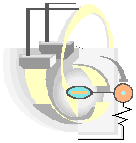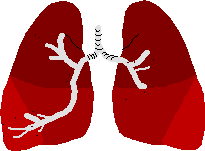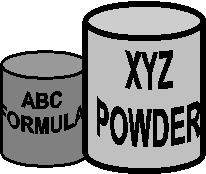DOH Medicaid Update February 2004 Vol.19, No.2
Office of Medicaid Management
DOH Medicaid Update
February 2004 Vol.19, No.2
State of New York
George E. Pataki, Governor
Department of Health
Antonia C. Novello, M.D., M.P.H., Dr. P.H.
Commissioner
Medicaid Update
is a monthly publication of the
New York State Department of Health,
Office of Medicaid Management,
14th Floor, Room 1466,
Corning Tower, Albany,
New York 12237
Table of Contents
Managed Care Special Needs Plans Expansion Of Service Areas
Timely Submission Of Claims To Medicaid
Important Cialis Prescribing And Billing Information
Diagnosis Of Occupational Diseases
Notice To New York State Hospitals Billing DRG's
How Your Doctor Diagnoses Asthma
Enteral Formula Prior Authorization
Enteral Products Classification List
Revised Pharmacy Billing Procedure For Compounded Prescriptions
Providers Are You Changing Your Correspondence Address Or Pay To Address
Free Live Satellite Videoconference On Diabetes Prevention

PHARMACISTS:
NEW NURSING HOME
ELIGIBILITY EDITS AND MESSAGING
Return to Table of Contents
New edits have been developed to highlight recipient eligibility messaging. Previously, pharmacy claims for recipients, whose eligibility file designated them as residing in a residential facility, generated an "NH" warning in the message field. Effective January 3, 2004, the NH warning message was replaced with a denial message based on Edit 1493 (Pharmacy Service Included in In-State Facility Rate-Deny), Reject code 85, RX Denial 325.
If a prescription is needed by a patient discharged from a residential facility whose eligibility file still has this "NH" designation, the pharmacist has the option to fill the prescription by overriding these edits. To override the denial message, use the eligibility clarification code of 2 in field 309-C9 in the NCPDP 5.1 billing format. The claim will then pend for up to 30 days (Edit 1316, Reject code 85, RX Response code 310) awaiting the eligibility update.
Please note: If the eligibility update does not occur within the 30 days of claim submission, the claim will be denied for edit 1316 (Pharmacy Service Included in In-State Facility Rate).
It is important to be sure that the patient you are billing for has actually been discharged from a residential facility, as claims billed are subject to denial or recoupment.
For Eligibility Update Issues: Contact the recipient's local social services district.
For Billing Issues: Contact Computer Science Corporation at (800) 343-9000.
MANAGED CARE SPECIAL NEEDS PLANS
EXPANSION OF SERVICE AREAS
Return to Table of Contents
Medicaid recipients in New York City now have the option to enroll in the following expanded service area for five Special Needs Managed Care Plans.
| Medicaid Provider Name | MEVS code on VeriFone | 10 characters in eMedNY window | Service Area |
| FidelisCare Healthier Life SN | OF | FIDELIS SN | Bronx, Brooklyn, SI, Manhattan, Queens |
| Healthfirst PHSP Inc SN | OH | HLTHFST SN | Bronx, Brooklyn, Manhattan |
| NYPS Select Health SN | OG | NYPSSEL SN | Manhattan, Bronx, Brooklyn |
| VidaCare Inc. SN | OD | VIDACARE SN | Manhattan, Bronx |
| MetroPlus Partnership in Care Plan SN | OM | METROPLUS SN | Bronx, Brooklyn, Queens, Manhattan |
Providers should make note of these codes in their MMIS Provider Manual under the heading "Recipient Other Insurance Codes".
| Special Needs Plans: Provider Relations | ||
| NYPS SelectHealth SN Provider Relations (866) 469-7774 | VidaCare Inc SN Provider Inquiry (800) 556-0674 |
Fidelis Care HealthierLife SN Provider Relations Call Center (888) FIDELIS (888) 343-3547 |
| MetroPlus Plan SN Provider Relations Call Center (800) 597-3380 | Healthfirst PHSP SN Provider Relations (800) 801-1660 | |
* Please contact the health plans above for Special Needs Plans (SNP) benefit package information.
Enrollees can call the New York Medicaid CHOICE Helpline at (800) 505-5678 to find out more about SNPs.
Additional Special Needs Plans billing information and exceptions for mental health and chemical dependency providers may be found in the August 2003 Medicaid Update at http://www.health.state.ny.us/health_care/medicaid/program/main.htm.
Questions regarding this article can be directed to the Department of Health at (518) 486-1383.
Reminder to All Providers

TIMELY SUBMISSION OF CLAIMS TO MEDICAID
Return to Table of Contents
Medicaid regulations require that claims for payment of medical care, services, or supplies to eligible recipients be initially submitted within 90 days of the date of service to be valid and enforceable, unless the claim is delayed due to circumstances outside the control of the provider. Acceptable reasons for a claim to be submitted beyond 90 days are:
- Litigation
- Medicare and other insurance processing delays
- Delay in Medicaid eligibility determinations
- Rejection or denial of the original claim for reason(s) other than the 90-days rule
- Administrative delay in the prior approval process
- Interrupted maternity care
- IPRO denial/reversal.
If a claim is denied or returned for correction, it must be corrected and resubmitted within 60 days of the date of notification to the provider. Claims not correctly resubmitted within 60 days, or those continuing to not be payable after the second resubmission, are neither valid nor enforceable. In addition, all claims must be submitted to the fiscal agent and be payable within two years from the date the care, services or supplies were furnished in order to be valid and enforceable against the Department or a social service district.
CLAIMS OVER 90-DAYS OLD, LESS THAN TWO YEARS OLD
All claims initially delayed over 90 days must be submitted within 30 days from the time submission came within control of the provider. For paper claims, a cover letter must be attached which specifies one or more of the acceptable reasons noted above.
Resubmitted paper claim forms should be typed or printed legibly in order to reduce delays in processing. Claim forms including attachment(s) or required documentation may be submitted in batches (50 forms or less) and enclosed in a single envelope or package. The invoice number of each claim form in the batch must be specified on the cover letter.
Please send all paper claims less than two years old directly to:
P.O. Box 4444
Albany, New York 12204-0444
Be sure to send the original claim form and retain a photocopy for your files. Claims submitted via tape, diskette or modem must specify the appropriate late submission reason code. Refer to the MMIS electronic billing instructions issued by the Fiscal Agent or the HIPAA 837 Companion Documents available at: https://www.nyhipaadesk.com, for valid coding.
PROCEDURES FOR REQUESTING A WAIVER OF THE TWO YEAR BILLING REGULATION
Effective January 1, 2003, all claims over two years old MUST INITIALLY be submitted directly to Computer Sciences Corporation within 90 days of the date control was passed to you.
As part of the process, your claim will be denied. A denial message (Edit 01292, DOS Two Yrs Prior to Date Received) will appear on your remittance statement.
Requests for waiver of the regulation regarding submission of claims greater than two years from the date of service must then be submitted to the address below within 90 days of the Edit 01292 denial as noted on the remittance statement:
Bureau of Medical Review and Payment
Two Year Review Unit
150 Broadway, Suite 6E
Albany, New York 12204-2736
Supporting documentation (cover letter of explanation, remittance statements, and notice of eligibility, fair hearing decision, evidence of agency error, etc.) must accompany your written request.
Any waiver requests received without a copy of the remittance statement documenting an Edit 01292 denial will be returned without further processing.
The Department will consider claims over two years old for payment if the provider can produce documentation verifying that the cause of the delay was the result of one or more of the following:
- Errors by the Department,
- Errors by a local social services district, or another agent of the Department, or
- Court-ordered payments.
If you have any questions on the processing, review or disposition of claims over two years old, please call (800) 562-0856, menu #4.
PRESCRIBERS AND PHARMACISTS
CIALIS INFORMATION
Return to Table of Contents
Effective March 1, 2004, Cialis will be added to the List of Medicaid Reimbursable Drugs.
This drug will be subject to the same rules and restrictions currently applied to Viagra and Levitra (note: there is a maximum of 6 tablets every 30 days and prescriptions are limited to an original one-month supply with up to 2 refills). Refer to the November 2003 Medicaid Update (page 11) for specific dispensing instructions and limitations.
The Medicaid Update may be accessed online at the New York State Department of Health website: http://www.health.state.ny.us/health_care/medicaid/program/main.htm
If you have any question please contact the Medicaid Pharmacy Unit at 518-486-3209.
DIAGNOSIS OF OCCUPATIONAL DISEASES
Return to Table of Contents
Many Medicaid recipients may be working in environments that may expose them to harmful substances. This article is provided to assist health care providers in identifying patients whose conditions may be related to their work environment. Because occupational disease is under- recognized,1 failing to consider the workplace factors that may contribute to a patient's condition can result in the ordering of unnecessary tests, inappropriate referrals, and of equal or greater importance, a missed opportunity to protect others who may be at risk. 1,2,3
As time with the patient is limited, there are a few, simple questions that can assist in determining if a condition may be work-related.1 Providers should routinely ask their patients:
- "What kind of work do you do?"
- "Are you now or have you previously been exposed to dusts, fumes, chemicals, radiation, or loud noise?"
- "Are your symptoms better or worse when you are at work?"
- "Do you think your health problems are related to your work?"
If the replies to these questions rule out the likelihood of a condition being work-related, inquiries along this line can stop. But if something is stated that arouses suspicion, a full occupational health history should be taken.
Self-administered occupational history forms can be an efficient way to obtain this information and are available online at: http://www.atsdr.cdc.gov/HEC/CSEM/exphistory/exphist_form.htm
It should be remembered that many occupational factors act in concert with non-occupational factors to cause disease, so indication of other etiologic factors, such as smoking, does not necessarily rule out a disease as also having an occupational etiologic component. 2 For more information on taking an exposure history, go to: http://www.atsdr.cdc.gov/HEC/CSEM/exphistory/pdffiles/exposure_history.pdf.
If the initial evaluation raises the suspicion that the disease is related to the workplace, providers in New York State can utilize a statewide network of occupational health clinics for consultation and referral: http://www.health.state.ny.us/environmental/workplace/clinic_network.htm. Some diseases, such as occupational lung diseases, pesticide poisonings, and heavy metals poisonings are reportable to the New York State Department of Health (NYSDOH). NYSDOH's authority in statute and regulation enables it to access and obtain this information in accordance with the requirements of the Health Insurance Portability and Accountability Act of 1996 (HIPAA). The NYSDOH provides information to health care providers and their patients, and with a patient's permission, will work with employers to identify and correct hazardous workplace conditions. Patients' interests are always put first and their confidentiality is maintained.
1Newman LS. Occupational Illness. New England Journal of Medicine, 333:1126-1134, 1995.
2Rosenstock L, Cullen MR. Clinical Occupational Medicine. WB Saunders Company, Philadelphia PA, 1986.
3 US DHHS, Agency for Toxic Substances and Disease Registry. Case Studies in Environmental Medicine. Taking an Exposure History. March 2000.
For more information contact Kitty Gelberg, Ph.D., MPH at (866) 807-2130 or e-mail her at khg01@health.state.ny.us.

Reminder
Physicians are required, by law, to report suspected cases of occupational lung disease to the New York State Department of Health.
To file a report, call toll free: (866) 807-2130
More information about occupational lung diseases and physician reporting forms can be found at http://www.nyhealth.gov/environmental/workplace/lung_disease_registry/
List of
Top 20 DRGs
NOTICE TO NEW YORK STATE
HOSPITALS BILLING DRGs
Return to Table of Contents
The Bureau of Health Economics of the New York State Department of Health has produced a new Diagnosis Related Group (DRG) table for Medicaid payments to New York State hospitals. The new table is effective for discharges beginning January 1, 2004.
Providers may request the table by sending an e-mail request to RBU@health.state.ny.us. Please include "2004 SIW Table" on the subject line of your e-mail.
Annually the Bureau of Health Economics determines the 20 most frequently billed DRGs. When payment for one of these DRGs is indicated, the remittance statement will list rate code 2996 rather than 2946.
Effective discharge date January 1, 2004, the Top 20 DRGs are:
14 SPECIFIC CEREBROVASC DISORD EXC TIA & INTRACRANIAL HEMORRHAGE
88 CHRONIC OBSTRUCTIVE PULMONARY DISEASE
89 SIMPLE PNEUMONIA & PLEURISY AGE >17 W CC
121 CIRCULATORY DISORDERS W AMI & MAJOR COMP, DISCHARGED ALIVE
127 HEART FAILURE & SHOCK
139 CARDIAC ARRHYTHMIA & CONDUCTION DISORDERS W/O CC
143 CHEST PAIN
183 ESOPHAGITIS, GASTROENT & MISC DIGEST DISORD AGE >17 W/O CC
294 DIABETES AGE >35
296 NUTRITIONAL & MISC METABOLIC DISORDERS AGE >17 W CC
359 UTERINE & ADNEXA PROC FOR CA IN SITU & NONMALIG W/O CC
371 CESAREAN SECTION W/O CC
372 VAGINAL DELIVERY W COMPLICATING DIAGNOSES
373 VAGINAL DELIVERY W/O COMPLICATING DIAGNOSES
541 RESP DISORD EXC INFECTIONS, BRONCHITIS, ASTHMA W MAJOR CC
629 NEONATE, BWT > 2499G, W/O SIGN OR PROC, W NORM NEWB DIAG
745 OPIOID ABUSE OR DEPENDENCE W/O CC
751 ALCOHOL ABUSE OR DEPENDENCE W/O CC
775 BRONCHITIS & ASTHMA AGE <18 W/O CC
852 PERCUTANEOUS CARDIOVASCULAR PROC W NON-DRUG ELUTING STENT W/O AMI
If you have any questions, please contact the Bureau of Medical Review and Payment, Rate Based Provider Unit, at (518) 474-8161.
PATIENT EDUCATIONAL TOOLS
Return to Table of Contents

This month's patient educational tools features an article on "How your Doctor Diagnoses Asthma".
The Medicaid program encourages practitioners to copy and distribute the following information to their patients and to share them with their colleagues.
HOW YOUR DOCTOR DIAGNOSES ASTHMA
Common Symptoms of Asthma
- Wheeze
A wheezing sound when you breathe. Sometimes this happens only when you have a cold. - Cough
You may cough up mucus. The cough often comes back and may last longer than one week. - Shortness of breath
Difficulty breathing may happen occasionally or often. It feels like you cannot get enough air into your lungs. - Chest tightness
Your chest may feel tight in cold weather or during exercise. Chest tightness may be one of the signs that your asthma is getting worse.
The asthma symptoms alone are not enough to diagnosis asthma. You must see a doctor who will perform tests to make the correct diagnosis.
How Asthma is Diagnosed
To Diagnose Asthma, the Doctor Will Need to See if Three Criteria Are Met:
- You have recurring episodes where your airflow becomes blocked (obstructed), resulting in at least one of the above asthma symptoms.
- The blocked airflow can be at least partially reversed.
- Other possible diagnoses are ruled out.
What the Doctor Will Do To Determine a Diagnosis of Asthma
Medical History
The Doctor Will:
Evaluate your medical history to identify:
- What asthma symptoms you have had.
- When your symptoms occur.
- How long the symptoms last.
- If there is a family history of asthma and allergies.
Ask about what triggers your asthma. Asthma triggers are things that irritate your airways and make breathing difficult.
Common Asthma Triggers:
- Inhaled allergens & irritants
- Medication
- Weather
- Exercise induced asthma symptoms
- Illnesses such as viral infections
- Emotions including fear, laughing or crying
Physical Examination
The Doctor Will:
- Conduct a physical exam that focuses on the upper respiratory tract, chest, and skin.
- Listen for wheezing during normal breathing.
- Look for increased nasal secretions and nasal polyps.
- Look at your skin for eczema and other allergic skin reactions.
Pulmonary (Lung) Function Testing
Spirometry
- Spirometry is the most reliable test for diagnosing asthma.
- Spirometry measures the amount and rate of air a person breathes in order to diagnose illness or determine progress in treatment.
- A spirometer is an instrument that measures the maximum volume of air that you can exhale after breathing in as much as you can. The total volume you exhale is called "forced vital capacity", FVC.
- The spirometer also measures the volume of air you exhale in the first second. This is called "forced expiratory volume in one second", FEV1.
- In general, the more air you breath out during the first second of a full exhalation, the better.
- The doctor may take several spirometry readings to compare your FVC and FEV1. These readings will allow the doctor to determine how much obstruction is in your airways.
- The doctor may next give you a bronchodilating drug that will relax the muscles of your airways. After the drug has taken effect, spirometry testing will be performed again. If you are able to breathe out significantly more air during the first second that you could before, it indicates that your breathing obstruction is "reversible". This is a strong indication of asthma.
Additional Testing
Your doctor may order additional tests to help rule out other possible causes for your symptoms. These additional tests may include: additional pulmonary function tests; chest x-rays; allergy testing; examination for nasal polyps or sinusitis; and evaluation for gastroesophageal reflux (heartburn).
Remember: If your doctor diagnoses you with asthma, this does not mean you have to stop living a normal life. The good news is that with the right treatment, people with asthma can live with almost no limits to their activities.
Adapted from: Expert Panel Report 2: Guidelines for the Diagnosis and Management of Asthma (Bethesda, MD): National Institutes of Health, National Heart, Lung, and Blood Institute: 1997.
The Medicaid Program reimburses for medically necessary care, services, and supplies needed in the diagnosis and treatment of asthma. For information regarding Medicaid payment of these services, contact the Bureau of Program Guidance at (518) 474-9219. 2/04
ENTERAL FORMULA PRIOR AUTHORIZATION
POLICIES AND PROCEDURES FOR DISPENSERS
Return to Table of Contents
BEFORE activating an enteral formula prior authorization, the dispenser must:
- Have the formula in stock;
- Notify the recipient if you plan to substitute a generically equivalent formula;
- Agree to dispense the formula for all refills;
- Begin to complete the Dispenser Worksheet:
- Determine correct HCPCS ("B") code for the formula per Classification List.
- Determine the caloric units per month per written fiscal order. (The number of calories per can divided by 100 equals the number of caloric units per can.) Further instructions on caloric unit calculation are available at: http://www.health.state.ny.us/health_care/medicaid/program/2003/jun2003.htm#enteral
WHILE activating an enteral formula prior authorization, the dispenser must:
- Validate that the caloric unit calculation authorized through the telephone system is correct per the written fiscal order. ( NOTE: once the dispenser activates an authorization, the prescriber cannot cancel it.)
- Do not activate a prior authorization if the telephone system is reporting an amount less than the written fiscal order. Contact the prescriber to reconcile the prior authorization and written fiscal order. Through the telephone system, the prescriber can cancel a prior authorization that has not been activated and request another with the correct calories per day. The telephone system will then convert calories per day to caloric units per month for the dispenser call.
- Validate that the refills on the written fiscal order match the prior authorization.
- Do not activate a prior authorization if the telephone system is reporting a different number of refills than is written on the fiscal order. Contact the prescriber to reconcile the prior authorization and written fiscal order. Through the telephone system, the prescriber can cancel a prior authorization that has not been activated and enter refills per written fiscal order on a new authorization, or a new written fiscal order can be provided by the prescriber to match the refills on the prior authorization.
- If the authorization is correct, answer accordingly on the telephone system and complete theDispenser Worksheet.
AFTER activating an enteral formula authorization, the dispenser must:
- Dispense all monthly refills in full as indicated on the written fiscal order for the approved period of service, until the expiration date of the prior authorization.
- Only dispense refills requested by the recipient. Further information on refills are available at: http://www.health.state.ny.us/health_care/medicaid/program/2003/sep2003.htm
- Bill with the same Prior Authorization Number, Recipient CIN, Provider ID, Category of Service and five or seven digit HCPCS code as entered and reported on the telephone system for the claim to be paid. Refills and caloric units (quantity) cannot exceed what has been authorized on the prior authorization record.
ENTERAL FORMULA PRIOR AUTHORIZATION
DISPENSER WORKSHEET
Return to Table of Contents
ENTERAL PRODUCTS CLASSIFICATION LIST
Return to Table of Contents

The following list of enteral formulae is provided as a guideline for prescribers and dispensers. This is not an all inclusive list, but it is meant to assist providers in prescribing and determining the correct item code for billing. For products not listed below, providers are to use their judgement in selecting the appropriate product classification based upon the prescriber's order, general categorical descriptions, and Medicaid coverage criteria (see December 2002 Medicaid Update for coverage criteria). Powdered, liquid, fiber-added, calcium-added and high protein forms of the same formula are billed under the same code. Please keep this information in the Enteral Therapy section of your MMIS Provider Manual Italicized products are subject to coverage by the Women, Infants, and Children (WIC) program.
| Product | Code |
| 80056 powder | B4154 |
| Accupepha | B4153 |
| Acerflex | B4154 |
| Advantage 10+ | B4151 |
| Advantage 60+ | B4151 |
| Advera | B4154 |
| Alimentum | B4153 |
| Alitraq Powder | B4154 |
| Amin-Aid Powder | B4154 |
| Analog formulas | B4154 |
| Apple Fiber | B9998 |
| Aquasol E | B9998 |
| ATMF | B4150 |
| Attain | B4150 |
| BCAD-2 | B4154 |
| Bio-care | B4150 |
| Boost | B4150 |
| Boost Breeze | B4150 |
| Boost High Protein | B4150 |
| Boost Plus | B4152 |
| Boost Pudding | B4150 |
| Boost w/Fiber | B4150 |
| Calcilo XD | B4154 |
| Calories Plus | B4152 |
| Casec Powder | B4155 |
| Choice DM | B4154 |
| Compleat | B4151 |
| Compleat Pediatric | B4151 |
| Comply | B4152 |
| Criticare-HN | B4153 |
| Crucial | B4153 |
| Cyclinex-1 | B4154 |
| Cyclinex-2 | B4154 |
| Deliver 2.0 | B4152 |
| Diabetisource | B4154 |
| Diabetisource AC | B4154 |
| Duocal | B4154 |
| Egg/Pro Powder | B4155 |
| EleCare Powder | B4153 |
| Elemental 028 Extra | B4154 |
| Elementra | B4155 |
| Enfamil AR | B9998 |
| Enlive | B4150 |
| Enriched Antioxidant Formula | B4155 |
| Ensure | B4150 |
| Ensure HN | B4150 |
| Ensure Light | B4150 |
| Ensure Plus | B4152 |
| Ensure Plus HN | B4152 |
| Ensure Pudding | B4150 |
| Ensure w/ Fiber | B4150 |
| Entera | B4150 |
| Entera Isotonic | B4150 |
| Entera OPD | B4154 |
| Enteralife HN | B4150 |
| Enteralife HN-2 | B4150 |
| Entrition HN | B4150 |
| Entrition 1.5 | B4152 |
| Epulor | B4155 |
| Essential Pro Plus | B4155 |
| Essential Protein | B4155 |
| Fiberlan | B4150 |
| Fibersource | B4150 |
| Fibersource HN | B4150 |
| Flavonex | B9998 |
| Forta Drink | B4150 |
| Forta Shake | B4150 |
| Fortison | B4150 |
| Gevral Protein | B4155 |
| Glucerna | B4154 |
| Glucerna Select | B4154 |
| Gluco-Pro | B4154 |
| Glutamine-Plain | B4155 |
| Glutamine Rapid Release | B4155 |
| Glutapak-10 | B4155 |
| Glutarex-1 | B4154 |
| Glutarex-2 | B4154 |
| Glutasolve | B4155 |
| Glutasorb RTU | B4153 |
| Glytrol | B4150 |
| Hearty Balance | B4150 |
| Hepatic-Aid Powder II | B4154 |
| Hominex-1 | B4154 |
| Hominex-2 | B4154 |
| HOM 1 | B4155 |
| HOM 2 | B4155 |
| HPF Plus | B4155 |
| Immun-Aid | B4154 |
| Immune System Boost | B4155 |
| Immunocal | B4155 |
| Imu-Plus | B4155 |
| Impact | B4154 |
| Impact 1.5 | B4154 |
| Impact Glutamine | B4153 |
| Impact Recover | B4154 |
| IntensiCal | B4153 |
| Introlite | B4150 |
| Isocal | B4150 |
| Isocal-HN | B4150 |
| Isocal HN Plus | B4150 |
| Isocal II | B4150 |
| Isofiber | B4150 |
| Isolan | B4150 |
| Isomil & Isomil DF | B4150 |
| Isosource | B4150 |
| Isosource 1.5 | B4152 |
| Isosource VHN | B4154 |
| Isosource-HN | B4150 |
| I-Valex-1 | B4154 |
| I-Valex-2 | B4154 |
| Jevity 1 Cal | B4150 |
| Jevity 1.2 Cal | B4150 |
| Jevity 1.5 Cal | B4152 |
| Juven | B4155 |
| KetoCal | B4151 |
| Ketonex 1 | B4154 |
| Ketonex 2 | B4154 |
| Kindercal | B4150 |
| LactAid tablets | B9998 |
| Lactofree | B9998 |
| L-Emental | B4153 |
| L-Emental Hepatic | B4154 |
| L-Emental Pediatric | B4153 |
| Lipisorb | B4154 |
| Lipomul | B4155 |
| Lofenelac | B4154 |
| Lonalac | B4150 |
| Lorenzo Oil | B4154 |
| Magnacal Renal | B4154 |
| Maxamaid formulas | B4154 |
| Maxamum formulas | B4154 |
| MCT Oil | B4155 |
| Meritene Powder | B4150 |
| Microlipid | B4155 |
| Moducal Powder | B4155 |
| Modulen IBD | B4154 |
| MSUD Diet | B4154 |
| MSUD-1 | B4154 |
| MSUD-2 | B4154 |
| Naturite | B4150 |
| Naturite Plus | B4152 |
| Neocate | B4153 |
| Neocate Junior | B4153 |
| Neocate One + | B4153 |
| Nepro | B4154 |
| Nestle Flavor Packets | B9998 |
| Neutra-Phos | B9998 |
| Newtrition | B4150 |
| Newtrition HN | B4150 |
| Newtrition Isofiber | B4150 |
| Newtrition Isotonic | B4150 |
| Newtrition 1.5 | B4152 |
| Nitrolan | B4150 |
| NovaSource 2.0 | B4152 |
| NovaSource Pulmonary | B4154 |
| Novasource Renal | B4154 |
| NuBasics | B4150 |
| NuBasics Juice Drink | B4150 |
| NuBasics Plus | B4152 |
| NuBasics VHP | B4150 |
| Nutri-Drink | B4150 |
| Nutramigen | B4150 |
| Nutrassist-1.5 | B4152 |
| Nutren Junior | B4150 |
| Nutren-1 | B4150 |
| Nutren-1.5 | B4152 |
| Nutren-2 | B4152 |
| Nutrifocus | B4152 |
| NutriHeal | B4150 |
| Nutrihep | B4154 |
| Nutrilan | B4150 |
| NutriRenal | B4154 |
| NutriVent | B4154 |
| NutriVir | B4153 |
| NutriVir NSA | B4153 |
| Optimental | B4153 |
| OS 1 | B4154 |
| OS 2 | B4154 |
| Osmolite | B4150 |
| Osmolite-HN | B4150 |
| Osmolite-HN Plus | B4150 |
| Pediatric E028 | B4153 |
| Pediasure | B4150 |
| Pepdite One + | B4153 |
| Peptamen | B4154 |
| Peptamen 1.5 Diet | B4153 |
| Peptamen Jr | B4154 |
| Peptamen VHP | B4154 |
| Peptinex | B4153 |
| Peptinex DT | B4153 |
| Peptical | B4153 |
| Perative | B4154 |
| Periflex | B4154 |
| PFD-2 | B4155 |
| Phenex 1 | B4154 |
| Phenex 2 | B4154 |
| PhenylAde Amino Acid | B4155 |
| PhenylAde Drink Mix | B4154 |
| Phenylfree 1 | B4154 |
| Phenylfree 2 | B4154 |
| Phenylfree 2HP | B4154 |
| Phlexy-10 Capsules | B4155 |
| Phlexy-10 Drink Mix | B4155 |
| PKU1 | B4154 |
| PKU2 | B4154 |
| PKU3 | B4154 |
| Polycose | B4155 |
| Portagen | B4150 |
| Pregestimal | B4154 |
| ProBalance | B4150 |
| ProCel | B4155 |
| Product 3232A | B4155 |
| Profiber | B4150 |
| Promix | B4155 |
| ProMod | B4155 |
| Promote | B4150 |
| Propac | B4150 |
| Pro-Peptide | B4154 |
| Pro-Peptide VHN | B4154 |
| Pro-Phree | B4155 |
| Propimex 1 | B4154 |
| Propimex 2 | B4154 |
| ProSobee | B4151 |
| Pro-Stat | B4155 |
| Pro-Stat 101 | B4155 |
| ProSure | B4155 |
| Protain XL | B4154 |
| Provide | B4154 |
| ProViMin | B4155 |
| Pulmocare | B4154 |
| Reabilan | B4153 |
| Reabilan-HN | B4154 |
| ReGain Plus | B4154 |
| Renalcal | B4154 |
| Re-Neph/Re-Neph Free | B4154 |
| Replete | B4154 |
| Resource | B4150 |
| Resource Arginaid | B4155 |
| Resource Arginaid Extra | B4154 |
| Resource Diabetic | B4150 |
| Resource Diabetishield | B4150 |
| Resource for Kids | B4150 |
| Resource Fruit Beverage | B4150 |
| Resource Glutasolve | B4155 |
| Resource Instant Protein Powder | B4155 |
| Resource Plus | B4152 |
| Resource Support | B4150 |
| Respalor | B4152 |
| Restore-X | B4155 |
| Resurgex | B4155 |
| Ross Carbohydrate Free | B4155 |
| Sandosource Peptide | B4154 |
| Scandi Shake | B4152 |
| Similac PM 60/40 | B4154 |
| SLD | B4154 |
| SoyPro | B4155 |
| Stresstein | B4154 |
| Subdue | B4153 |
| Subdue Plus | B4153 |
| Sumacal | B4155 |
| Suplena | B4154 |
| Sustacal | B4150 |
| Sustacal Pudding | 4150 |
| Sustagen Powder | B4150 |
| Sympt-X Glutamine | B4155 |
| Tarvil (paper PA required) | B4155 |
| Tolerex | B4156 |
| Traumacal | B4154 |
| Traum-Aid HBC | B4154 |
| Travasorb Hepatic | 4154 |
| Travasorb-HN | B4153 |
| Travasorb-MCT | B4154 |
| Travasorb Renal | B4154 |
| Travasorb Standard | B4156 |
| TwoCal-HN | B4152 |
| Tyrex-1 | B4154 |
| Tyrex-2 | B4154 |
| UCD-1 | B4154 |
| UCD-2 | B4154 |
| Ultracal | B4150 |
| Ultracal HN Plus | B4150 |
| Ultralan | B4152 |
| Ultracare Kids | B4154 |
| VHC 2.25 | B4152 |
| Vari-Flavors | B9998 |
| Vital-HN | B4153 |
| Vitaneed | B4151 |
| Vivonex flavor packets | B9998 |
| Vivonex Pediatric | B4153 |
| Vivonex Plus | B4154 |
| Vivonex RTF | B4153 |
| Vivonex-TEN | B4154 |
- Use code B4100 #Food thickener, administered orally, per ounce for products such as Thick-It, Thick-n-Easy and Thicken-Up. A Dispensing Validation System (DVS) authorization number is required, obtained through the Medicaid Eligibility Verification System (MEVS). (For questions on obtaining a DVS authorization through MEVS, call Computer Sciences Corporation at (800) 343-9000.)
- Paper prior approval is required for code B9998, when the prescriber orders greater than 2000 calories per day for any combination of formula(s), or over 1000 calories per day for code B4155.
Questions may be referred to the Bureau of Medical Review and Payment at (518) 474-8161.

Revised Pharmacy Billing Procedure for
Compounded Prescriptions
Return to Table of Contents
Currently, the New York State Medicaid program provides reimbursement for compound prescriptions using the NDC code for each ingredient as described in Option 1 -- Billing for Individual Components by NDC Number.
Effective February 18, 2004, a revised method of billing compound prescriptions, Option 2 -- Billing for a Compound as a Single Entity, may be used.
Note: The HCPCS code S9430 referenced on page 4-38 (Rev. 4/03) of the Pharmacy MMIS Manual for compound billing is incorrect and should be deleted from your manual.
Billing Guidelines for Compound Prescriptions
Option 1 -- Billing for Individual Components by NDC Number using NCPDP 3.2 or 5.1
- This option must be used when billing compounded controlled substances to comply with the Bureau of Controlled Substances standards.
- Submit claims for compounded prescriptions using the NDC code for each ingredient. These claims are eligible for the Electronic Claim Capture (ECC) option when submitted through the NCPDP format.
- Each ingredient must have a unique prescription number.
- For on-line submitted claims, NCPDP Compound Code Field (406-D6) must contain a value of 1.
- Each drug ingredient payable by New York State Medicaid will be reimbursed at AWP-12% plus a dispensing fee: $3.50 (if a brand drug) or $4.50 (if a generic drug).
- Each ingredient may impact the patient's utilization threshold.
- Payment will only be made for NDCs covered on the List of Medicaid Reimbursable Drugs.
OR
Option 2 -- Billing for a Compound as a Single Entity using NCPDP 5.1
- The entire prescription must have one unique prescription number.
- For on-line claims capture, Compound Code Field (406-D6) must contain a value of 2.
- In the Product Service ID Field (407-D7), enter NDC Code of all "9s".
- In the Product/Service ID Qualifier Field (436-E1) a value of 03 must be entered.
- A value of 1 must be entered in the Quantity Field.
- Reimbursement for each compound prescription billed using Option 2 is restricted to the usual and customary price charged to the general public for the total sum of the ingredients, up to the maximum reimbursable amount (MRA) for this option ($50.00), plus a dispensing fee of $3.50 and a compounding fee of $0.75.
- There is no co-payment assessed using this option.
- The pharmacy must retain the prescription and documentation of ingredients, amounts and costs.
- Pharmacy claims for compounds will be reviewed on a regular basis and those found non- compliant with New York State Medicaid policy will be subject to denial and/or recoupment.

Policy Reminder
A compound is considered reimbursable only when the following conditions have been met:
- a.) A combination of any two or more legend drugs found on the List of Medicaid Reimbursable Drugs; or
- b.) A combination of any legend drug(s) included on the List of Medicaid Reimbursable drugs and any other item(s) not commercially available as an ethical or proprietary product, or
- c.) A combination of two or more products which are labeled: "Caution: For Manufacturing Purpose only."
For example: The combination of Aquaphor® and Hydrocortisone Cream 2.5% is NOT considered a compound.
Reconstitution of a commercially available product is not considered compounding.
If you have any questions or require further information, contact Pharmacy Policy Staff at (518) 486-3209.

Providers! Are You Changing Your Correspondence Address or Pay to Address?
Return to Table of Contents
If you change your address, it is your responsibility to notify the Medicaid program in writing. Keeping your file current will ensure you receive all updates and announcements.
Your request should include your:
- provider name;
- provider identification number;
- category of service;
- new address;
- new telephone number; and,
- provider's signature.
Signature stamps, photocopies, etc., are not acceptable.
Indicate if your new address includes changes to both your correspondence address and pay to address. Mail information to:
Office of Medicaid Management
New York State Department of Health
150 Broadway, Suite 6E
Albany, New York 12204-2736

LIVE SATELLITE VIDEOCONFERENCE
On
DIABETES PREVENTION
The New York State Diabetes Prevention and Control Program presents:
The Diabetes Epidemic: Preventing the Preventable
Tuesday, March 9, 2004 9:00 - 10:30 AM EST
This live satellite videoconference (presented in collaboration with the University at Albany School of Public Health) will be broadcast free to participating hospitals and organizations.
Who should attend?
Primary care and family physicians, endocrinologists, physician assistants, nurse practitioners, nurses, dietitians, health psychologists, exercise specialists, social workers and other health care professionals who care for people with or at risk for diabetes.
Program Objectives
As a result of viewing this satellite broadcast, participants will be able to:
- Identify three factors that put patients at high risk for developing type 2 diabetes.
- Describe three overall behavioral changes that health care providers can discuss with their patients to reduce the transition from impaired glucose tolerance to type 2 diabetes.
- Identify specific individuals and programs within and outside of your practice environment that can become part of a diabetes prevention team for your patients.
- Identify three key behavioral strategies that patients can use to get started losing weight.
- Identify available resources to assist health care providers in meeting clinical practice recommendations for people already diagnosed with diabetes.
Presenters:
- James Desemone MD, FACE -- Associate Professor of Medicine, Director, Goodman Diabetes Service - Division of Endocrinology and Metabolism, Albany Medical Center
- Elizabeth Venditti, Ph.D., Director, Lifestyle Resource Core for the Diabetes Prevention Program/Diabetes Prevention Program Outcomes Study, University of Pittsburgh Medical Center and Assistant Professor of Psychiatry, Department of Behavioral Medicine, University of Pittsburgh
Moderator:
- Benita Zahn -- Television news anchor and Health Reporter for Albany-based NewsChannel 13's Live at 5 and Live at Noon.
Questions and Answers -- Phone in questions toll-free.
Free Continuing Education Credits
This activity has been planned and implemented in accordance with the Essential Areas and Policies of the Medical Society of the State of New York (MSSNY) through the joint sponsorship of the School of Public Health, University at Albany, SUNY; Bureau of Chronic Disease Services - Diabetes Prevention and Control Program, NYS Department of Health. The School of Public Health is accredited by the MSSNY to provide continuing medical education (CME) for physicians. The School designates this educational activity for a maximum of 1.5 hours of category one credit towards the AMA/PRA. Each physician should claim only those hours of credit that he/she actually spent in the educational activity.
This Educational Activity is presented by the School of Public Health Continuing Education, which has been approved as a provider of continuing education by the New York State Nurses Associations' Council on Continuing Education, which is accredited by the American Nurses' Credentialing Center's Commission on Accreditation. It has been approved for 1.5 contact hours and has been assigned approval code 54NLRE-PRV-02-067.
- Continuing education for dietitians pending.
- CME/CEU awarded at no charge to participants at certified downlink sites.
Registration online: http://www.albany.edu/sph/coned/diabetes.html
Listing of viewing sites available: http://www.albany.edu/sph/coned/sites.pdf
Reminder
You now have the opportunity to receive the Medicaid Update electronically and the benefits are numerous:
- You will receive the electronic version about 3 weeks earlier than the mailed hardcopy
- You will be able to disseminate internally via your own e-mail system, and forward to staff articles that are pertinent to your practice.
- You will have the flexibility to copy, highlight and print articles as needed.
To request the electronic version, just send an email to the Medicaid Update Mailbox at:
Please provide the following information:
- Name
- Medicaid Provider ID Number
- Email address (or multiple addresses, if desired)
The Medicaid Update: Your Window Into The Medicaid Program
The State Department of Health welcomes your comments or suggestions regarding the Medicaid Update.
Please send suggestions to the editor, Timothy Perry-Coon:
NYS Department of Health
Office of Medicaid Management
Bureau of Program Guidance
99 Washington Ave., Suite 720
Albany, NY 12210
(e-mail MedicaidUpdate@health.state.ny.us )
The Medicaid Update, along with past issues of the Medicaid Update, can be accessed online at the New York State Department of Health web site: http://www.health.state.ny.us/health_care/medicaid/program/main.htm